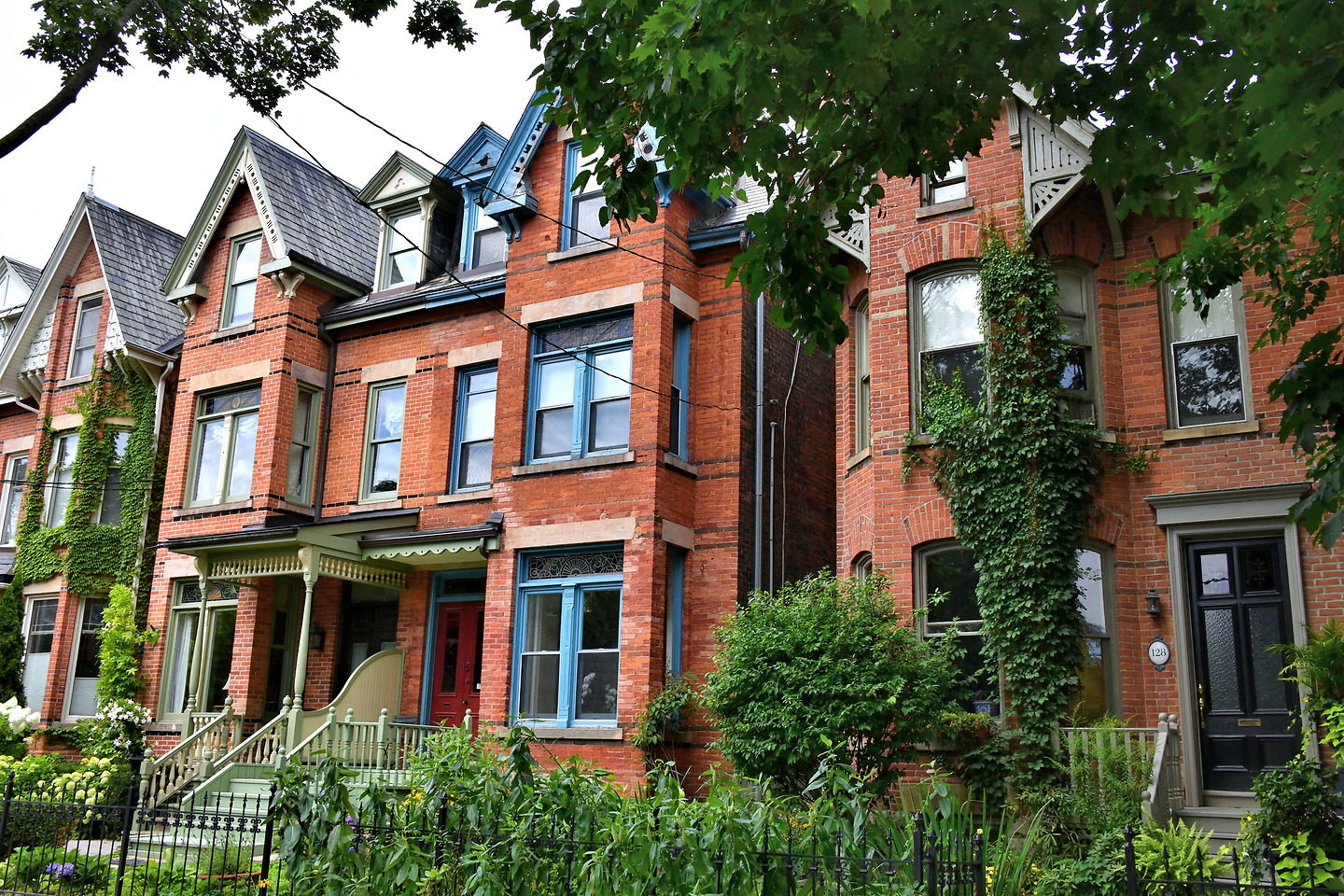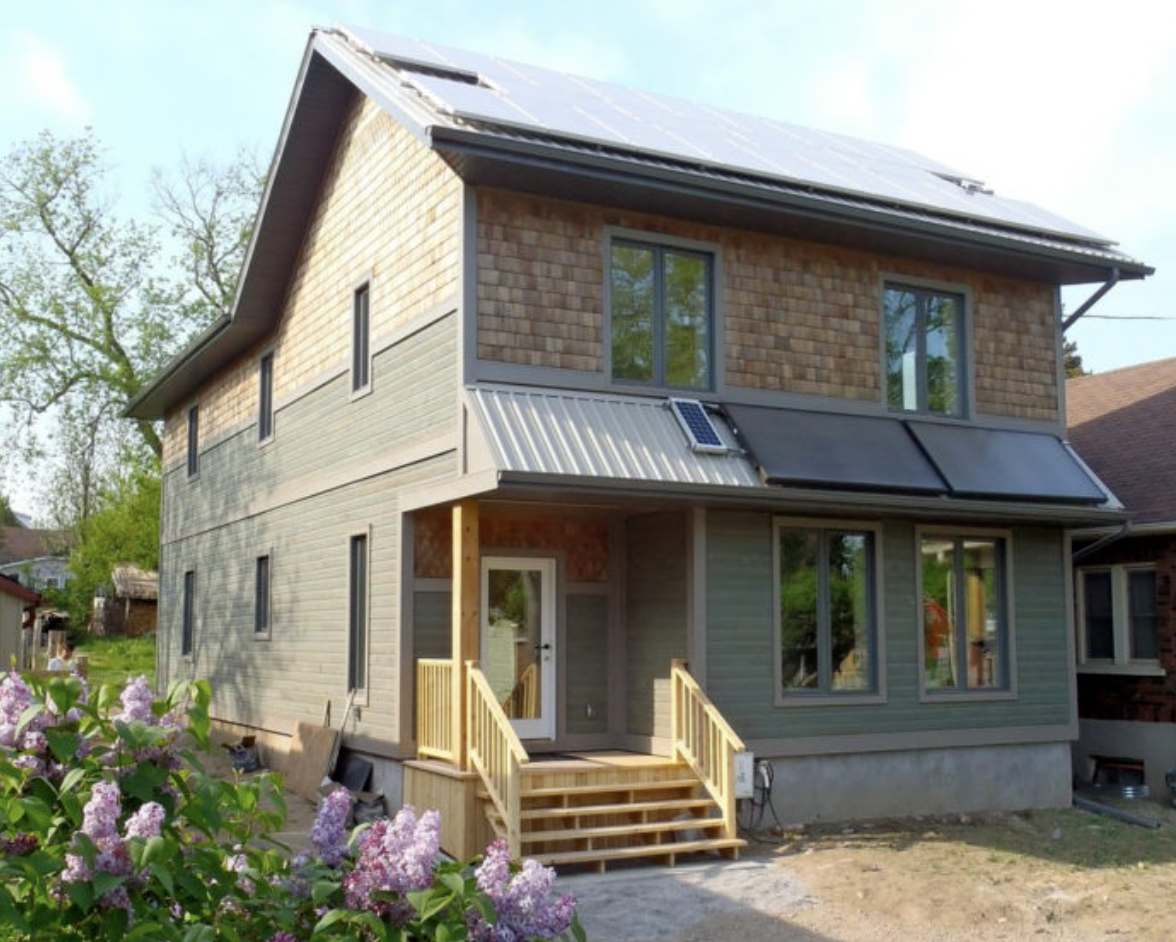What is a Net Zero Home?
Your guide to understanding Net Zero Homes.
You may have been hearing more and more about “Net Zero Homes” or “Net Zero Ready Homes” lately. But what does that really mean? Let’s break down each of these terms and how this way of living is on track to be the way of the future, with many jurisdictions in Canada looking at incorporating net-zero standards into residential building codes.

Net Zero Homes Are the Ultimate Energy Efficient Homes
Net Zero (NZ) homes are regular energy grid-tied homes that are so air-tight, well insulated, and energy efficient that they produce as much renewable energy as they consume over the course of a year.
According to Natural Resources Canada, NZ homes are expected to be 80% more energy efficient than a new building constructed to today’s building code minimum. They use on-site (or near-site) renewable energy systems to produce the energy they need.
A NZ home is most often connected to the electrical grid. This allows the house to use grid energy when solar production is low and to feed electricity to the grid when the home has excess energy. Over the year, the amount taken from the grid and the amount put back on the grid should cancel out, resulting in the house being net-zero.
Net Zero homes work by using renewable energy systems in order to produce energy that they require to function. All of the systems in a NZ home work together as a team.
There’s a lot of terminology surrounding Net Zero homes and buildings, but here is its most basic definition: A Net Zero home will make as much electricity on-site as it will consume over the course of one year.
A core aspect of NZ “readiness” is the use of improved air sealing, increased insulation levels, and high-performance windows and doors to reduce thermal demand. If you have a leaky home or a poor building envelope, you would be losing all that power you generated. Your first step is properly insulating and air sealing to get an efficient home, then add on from there. As your parents always said, “I’m not paying to heat the outdoors, close the door!”.
What Does a Net Zero Home Look Like?
NZ homes are built to be exceptionally airtight and insulated with additional layers to retain heat in the winter and keep it out in the summer. High-efficiency HVAC systems such as HRVs (link), appliances and other electrical devices help keep energy use down, and windows can be oriented to take advantage of warmth and light from the sun, known as passive heating.
What is a “Net Zero Ready” Home? How is it Different from a “Net Zero” Home?
A Net Zero Ready (NZR) home is a home that’s able and ready to go net zero at some point in the future. Generally, with a Net Zero Ready house, you have the ability to easily install renewables, as they are part of the design but have not yet been installed or used. NZR homes provide the benefits of a net zero home without the initial financial investment.
A Net Zero Ready home’s key components include energy efficiency, conservation, and efficient water management. It also ensures that homes have a substantial thermal building envelope and a healthy indoor air quality.
With this type of home, the homeowner has a streamlined path towards net zero energy once they are ready to do so. While NZR homes may not be completely self-sustaining, they are still significantly more efficient than a standard house. Typically, they consume less energy, reducing the impacts on the environment, as well lower costs from energy bills.

The Key to the Puzzle: The Building Envelope
With a Net Zero or Net Zero Ready home, the building envelope needs to be highly efficient for the rest of the system to work. Areas such as the attic, doors, windows, the foundation, and the exterior walls must be properly sealed with a high R-value (a material’s ability to resist heat flow) and low air leakage through any gaps. This ensures the home uses every unit of energy to its maximum potential. A poorly insulated wall is like having a giant hole in your home’s exterior.
A Net Zero Ready home’s key components include energy efficiency, conservation, and efficient water management. It also ensures that homes have a substantial thermal building envelope and a healthy indoor air quality.
With this type of home, the homeowner has a streamlined path towards net zero energy once they are ready to do so. While NZR homes may not be completely self-sustaining, they are still significantly more efficient than a standard house. Typically, they consume less energy, reducing the impacts on the environment, as well lower costs from energy bills.
R-value = a material’s ability to resist heat flow
NZ and NZR homes are achieved through improvements to the building envelope that reduce the overall energy consumed in the building. Renewables play an important role in NZ homes, but only after energy loads have been drastically reduced through energy efficiency measures.
Most Canadian homes use roughly half of their energy consumption on space heating. Net Zero homes, on the other hand, use only about a quarter of the energy of conventional homes on space heating.
Why?
Net Zero homes put emphasis on the building envelope. The building envelope separates the indoor environment from the outdoor environment. It includes the home’s overall airtightness, the insulation of the exterior walls, floors, ceilings, and foundation, windows, and doors.
A NZ home’s building envelope is extremely efficient and uses a significant amount of insulation to reduce heat loss in the winter and heat gain in the summer. This keeps heated or cooled air from leaking through cracks and holes to the outside, which in turn means that less energy is needed to heat and cool the home. Imagine not having to turn your heating on in November!
Ventilation
The ventilation system of a NZ home is also important. Since NZ homes are so airtight with minimal air leaking through the building envelope, advanced mechanical ventilation systems called Heat Recovery Ventilators (HRV) or Energy Recovery Ventilators (ERV) must be installed to provide occupants with fresh air at all times. The function of these units is to exchange the stale indoor air with fresh outdoor air with as minimum of an impact as possible on the temperature of the indoor air.
Why Go Net Zero or Net Zero Ready?
- Protection from future increases in energy prices: By reducing reliance on the energy sector, NZ and NZR homes are the way forward for anyone who wishes to reduce their own expenses as well as their environmental impact.
- Greater comfort: Strategic placement of the building, windows and overhangs, and increasing the airtightness of the building makes a NZE/NZEr building less drafty, quieter and less prone to uncomfortable temperature swings.
- Healthier indoor air quality: Rather than relying on a leaky building envelope that allows contaminants, uncontrolled moisture, or unconditioned air into your living space, a properly sealed building envelope can provide fresh air without wasting energy.
- Resilience and future-proofing: NZ and NZR homes are better able to withstand extreme weather and provide a refuge during a potential emergency situation. NZ and NZR homes can maintain a livable temperature longer thereby keeping you and your family safe and comfortable in extreme weather.
- Energy savings: Less energy is used to keep your home warm in the winter and cool in the summer. This often leads to lower energy bills that help offset any increased costs associated with additional energy efficiency measures. An energy efficient home can save operating costs over its lifetime.
- Smaller ecological footprint: Fewer greenhouse gas emissions and reduced energy use are a clear benefit.
- It’s the future of housing: As the government, builders, and homeowners start to incorporate sustainability into their planning, we’ll see energy efficiency options become more affordable, making Net Zero homes much more attainable.
NZ is the future of housing. Make your home stand the test of time, become more resilient and self-sufficient, especially in the face of potential disasters, and go where the future is heading.
Author: Jillian McArthur, NAIMA Canada
